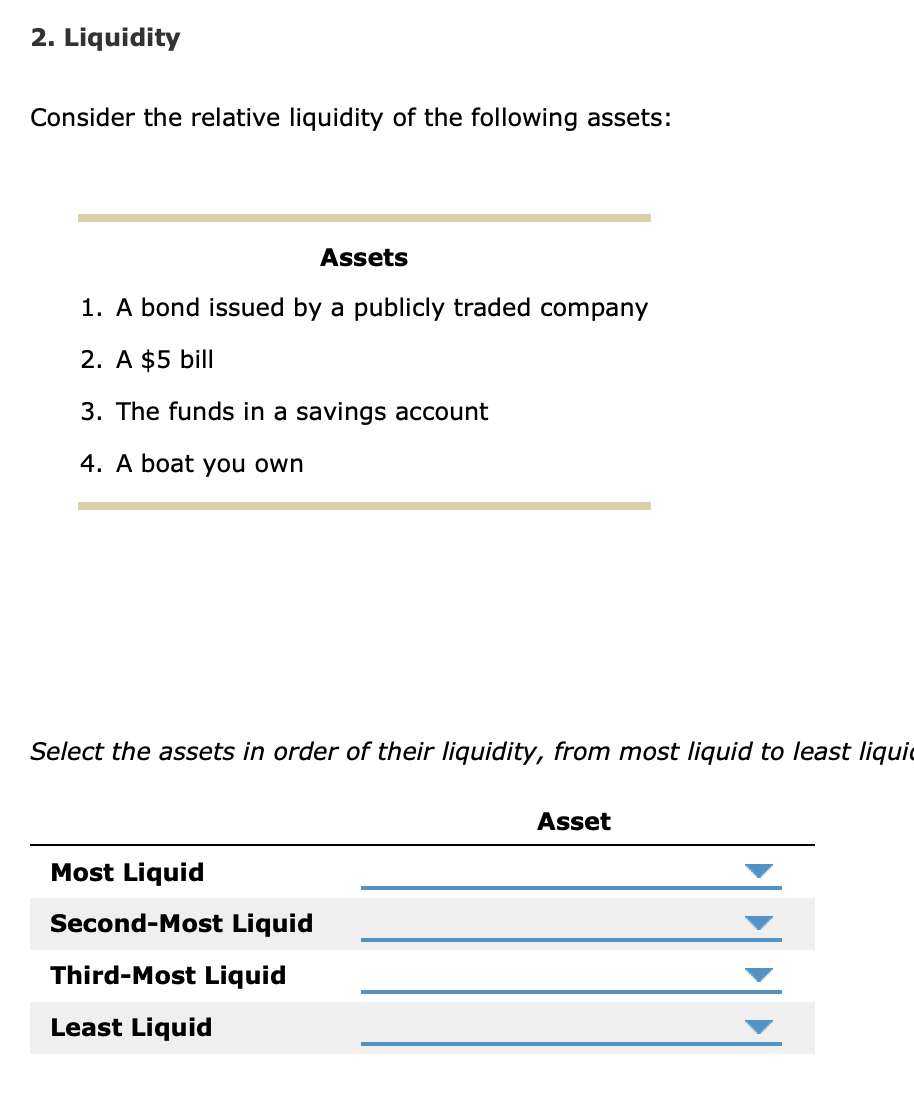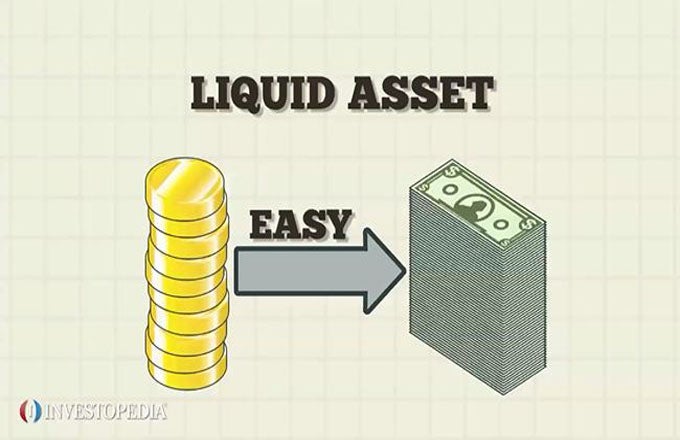

Instead of relying on the prices that buyers and sellers set within the last hour (or last few seconds even, as on a stock exchange), you may have to judge an asset’s value by prices set months ago.

This makes the market for these assets far less established and underscores the importance for investors to know the liquidity risk of an asset before they buy it. Illiquid assets, on the other hand, tend to be infrequently traded and are often unusual or unique. When you go to sell a liquid asset, like a diamond, you generally know what it’s worth and will typically have little trouble getting that market price for your property. These two features generally give rise to well-established and transparent pricing. Outside of accounting, liquidity is a key element of price setting in any market. Liquid assets tend to be fungible, like stock certificates or bonds, and they tend to exist in very busy markets. A company may have to distinguish its liquid and illiquid assets for the Internal Revenue Service, the Securities and Exchange Commission, lenders, potential investors and shareholders, just to name a few. Illiquidity is essential to many aspects of both accounting and investing. From an accounting perspective, reporting liquid assets is a requirement of many different forms of financial disclosures. Generally speaking, however, if an asset would require more than 24 to 72 hours to convert into cash for fair market value many investors will consider it illiquid. The definition of illiquidity is somewhat subjective and open to interpretation, as there is no legal definition of what it means to quickly convert something into cash. They are not, as a result, assets that you can count on being able to easily convert into cash. While they may have significant value, finding a buyer may be a time-consuming process. Artworks, collectibles and even many small capitalization or privately held stocks often fall into this category. Other assets are illiquid, because they are simply difficult to sell. For example, a 401(k) would not typically be considered a liquid asset for a preretirement individual, since converting it into cash would incur a significant tax penalty. Some, as noted above, come with contracts that make them difficult or impossible to quickly convert into cash. Illiquid assets can be hard to sell for a wide variety of reasons. Mutual funds that allow you to trade their shares freely are a liquid asset.) As a result, traders created exchange-traded funds (ETF) as a liquid counterpart to the typically illiquid mutual funds. While it’s still ordinarily possible to sell your shares in these funds, doing so typically incurs a steep penalty. Many have rules that restrict the owner’s ability to sell immediately. Mutual funds are a common example of an illiquid asset. At best, the owner could try and hold a fire sale, cutting the price until he or she finds a buyer, but this would mean accepting a significant loss of value. While a piece of land has significant value, converting that value into cash through a sale takes time. The most common example of an illiquid asset is real estate. These are assets that cannot be quickly sold, that are difficult to sell or that cannot be sold without incurring a significant loss in value. For example, a company may list “ cash and other liquid assets” as a single entry on a financial disclosure. Most stocks are also considered liquid assets because, even though they are not actual cash, there is a readily available market to sell them quickly.Īs a result most accounting standards consider liquid assets alongside an entity’s cash holdings. For example, holdings in a bank account are liquid assets. A liquid asset is one that can be quickly sold without a significant loss in value an illiquid asset is one that can’t be quickly resold without a significant loss in value.


 0 kommentar(er)
0 kommentar(er)
